The Impact of Bollard Lights on Urban Safety and Aesthetics in Street Design
The integration of Bollard Lights in urban street design plays a crucial role in enhancing both safety and aesthetics. According to a report by the National Institute for Transportation and Communities, proper lighting is linked to a 20% reduction in crime rates and a significant drop in pedestrian accidents. As cities increasingly prioritize walkability and public spaces, the deployment of Bollard Lights not only provides essential illumination but also complements the visual appeal of streetscapes. These fixtures, often used to delineate pathways and enhance visibility, foster a sense of security among pedestrians and cyclists alike. The importance of incorporating lighting strategies like Bollard Lights is further emphasized in the Urban Land Institute's findings, which highlight that well-lit streets can improve the overall perception of safety in urban environments, thereby encouraging community interaction and boosting local economies.
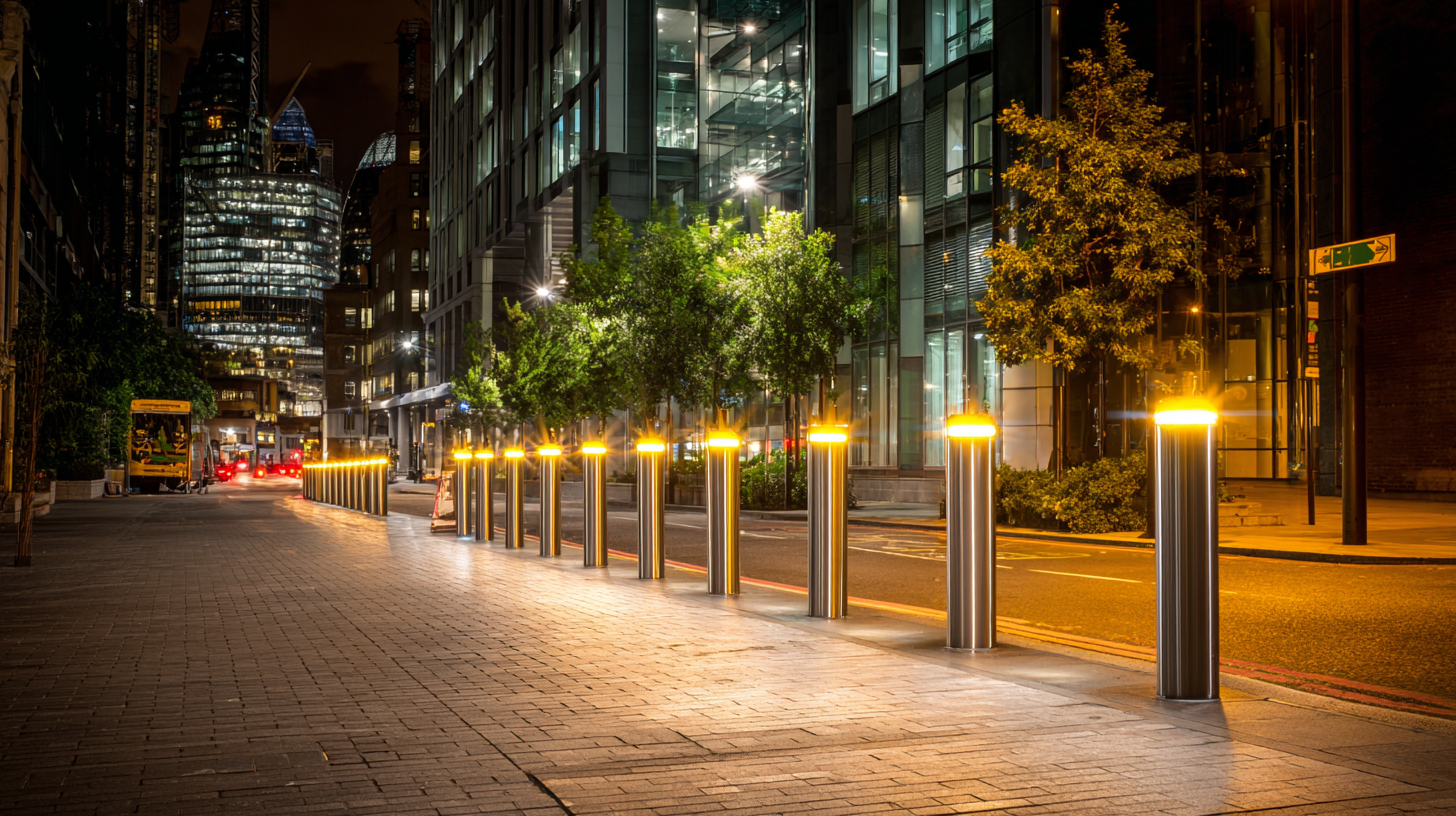
The Role of Bollard Lights in Enhancing Pedestrian Safety in Urban Environments
Bollard lights play an essential role in enhancing pedestrian safety in urban environments. These low-level lighting fixtures are strategically placed along walkways, parks, and streets to illuminate pedestrian paths without overwhelming the surrounding area. By providing adequate visibility during nighttime hours, bollard lights help reduce the risk of accidents, allowing pedestrians to navigate urban spaces more confidently. Their presence is particularly beneficial in high-traffic areas, where the mix of vehicles and foot traffic can create dangerous situations.
Moreover, bollard lights contribute to a sense of safety beyond mere illumination. Their design often incorporates aesthetic elements that can complement the architectural style of the surrounding environment. This dual purpose enhances the overall experience for pedestrians, making urban spaces not only safer but also more inviting. The soft glow of these lights can transform a dark street into a vibrant corridor, encouraging greater foot traffic and community interaction. By focusing on both functionality and aesthetics, cities can utilize bollard lights as a vital component of street design, enhancing the overall safety and enjoyment of urban environments for all users.
The Impact of Bollard Lights on Urban Safety and Aesthetics in Street Design
| Dimension | Description | Impact | Measurement Method |
|---|---|---|---|
| Visibility | Enhances nighttime visibility for pedestrians and vehicles. | Increased safety at night, reduced accidents. | Surveys and accident reports analysis. |
| Aesthetic Appeal | Improves visual aspects of streets and pathways. | Higher pedestrian satisfaction and increased foot traffic. | Public surveys and urban design assessments. |
| Crime Deterrence | Bollard lights act as a deterrent against criminal activities. | Reduction in reported crime in well-lit areas. | Crime statistics comparison before and after installation. |
| Pedestrian Behavior | Influences pedestrian choices in crosswalk usage. | Increased compliance with crosswalks and traffic signals. | Observational studies and pedestrian flow analysis. |
| Environmental Integration | Supports integration of lighting in green spaces. | Enhanced usability of parks and recreation areas. | Community feedback and ecological assessments. |
Aesthetic Considerations: How Bollard Lights Transform Street Design
Bollard lights play a crucial role in transforming the aesthetics of urban areas while enhancing street design. These lighting fixtures not only provide essential illumination for pedestrians and vehicles but also serve as decorative elements that contribute to the overall look and feel of a street. Available in various styles, materials, and colors, bollard lights can complement the architectural features of the surrounding environment, creating a visually pleasing atmosphere that enhances the urban experience.
Moreover, the strategic placement of bollard lights can lead to improved wayfinding and spatial orientation within city landscapes. By highlighting pathways, parks, or public squares, these lights guide foot traffic and encourage exploration of the area. The interplay of light and shadow cast by bollard lights adds a dynamic quality to the streetscape, making it more inviting and engaging during nighttime. This transformation not only beautifies the urban space but fosters a sense of safety, encouraging more people to enjoy their surroundings after dark.
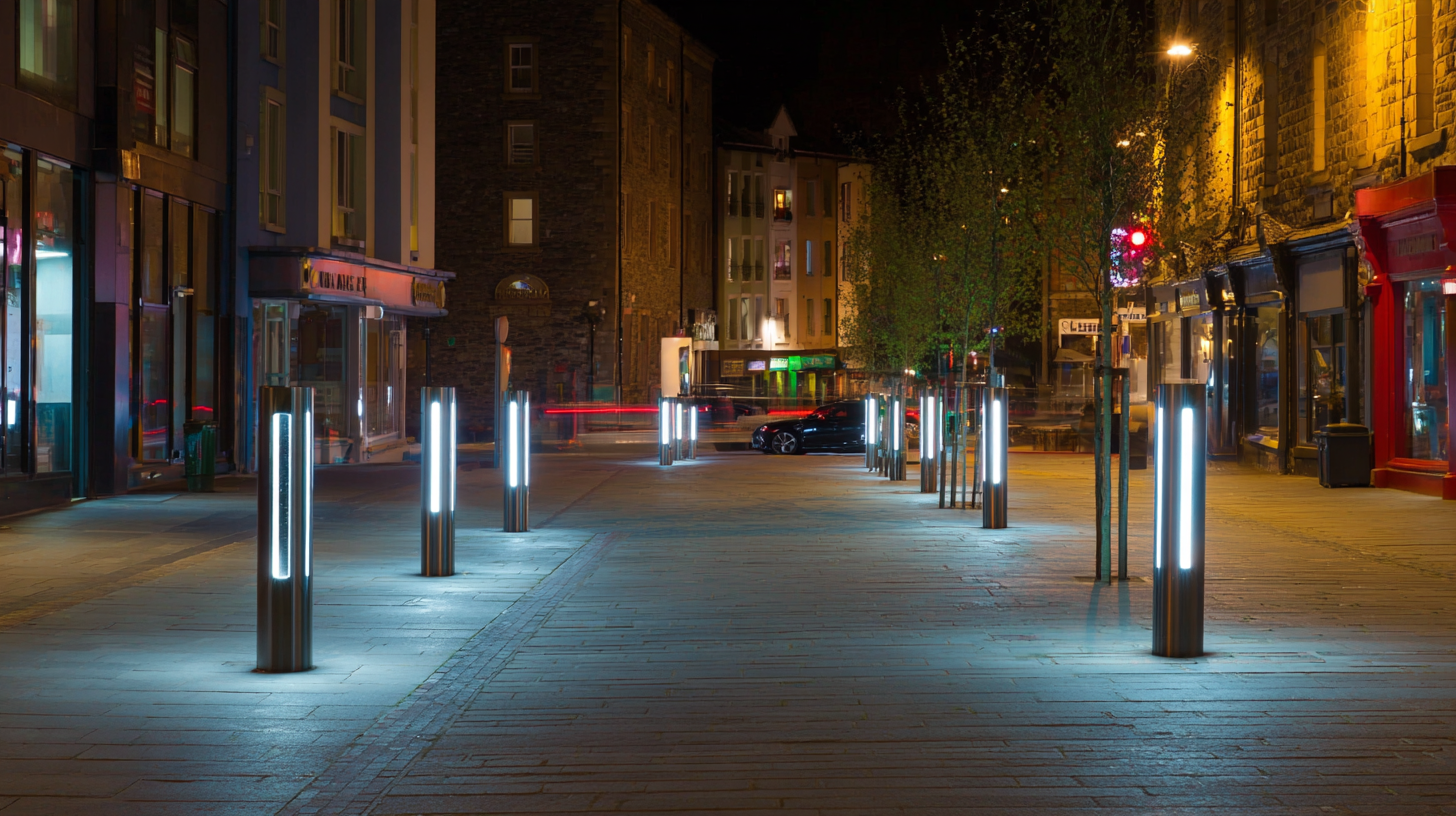
Comparative Analysis: Bollard Lights Versus Traditional Street Lighting
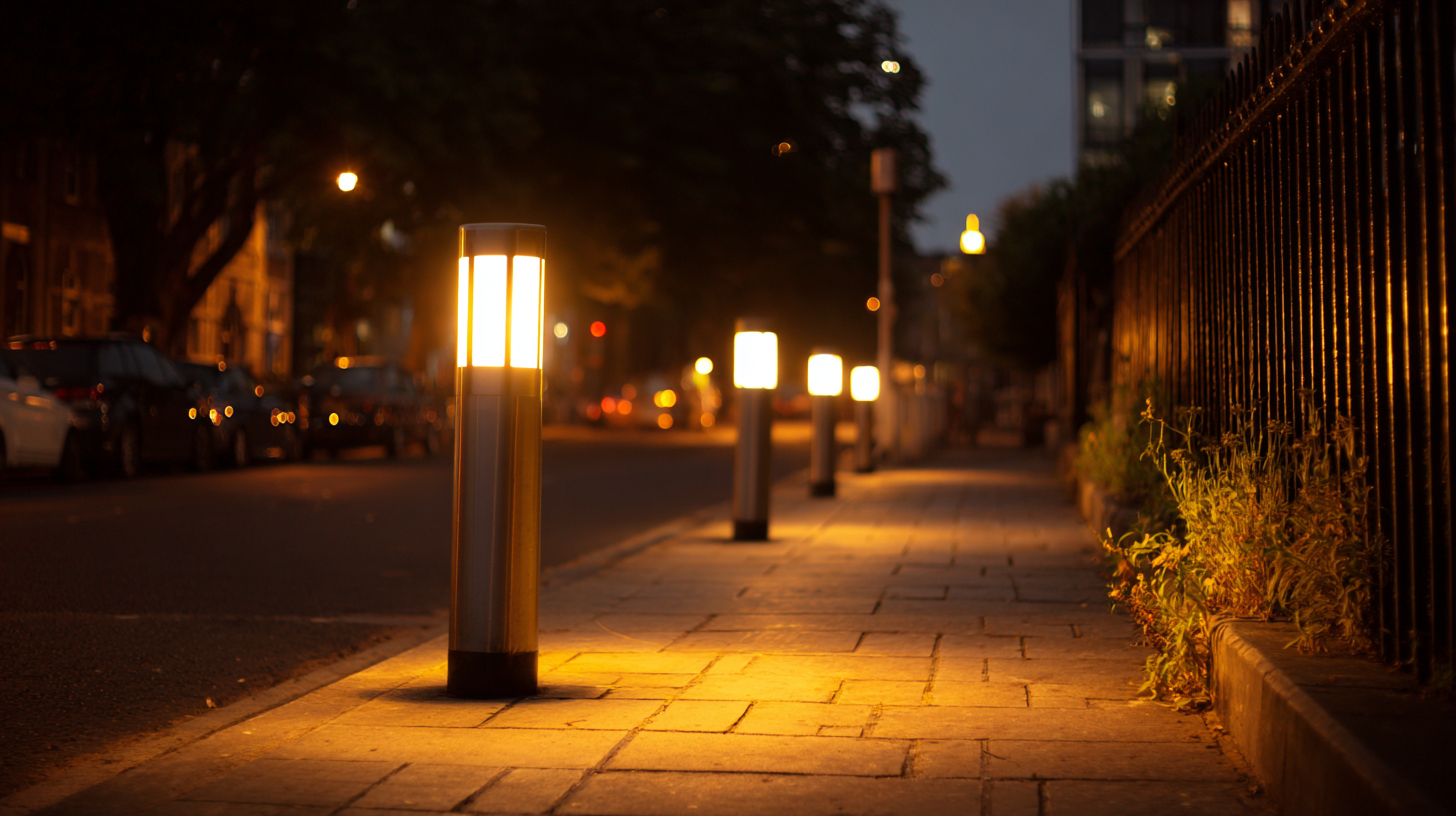 Bollard lights have emerged as a prominent alternative to traditional street lighting in urban design, offering unique benefits in both safety and aesthetics. Compared to conventional street lamps, which can often cast large shadows and create uneven lighting, bollard lights provide a more evenly distributed illumination.
This is particularly important for pedestrian pathways and park areas, as the lower height of bollard lights minimizes glare while enhancing visibility. This design feature helps promote a sense of safety among pedestrians, as well-lit areas tend to deter criminal activity and enhance overall urban security.
Bollard lights have emerged as a prominent alternative to traditional street lighting in urban design, offering unique benefits in both safety and aesthetics. Compared to conventional street lamps, which can often cast large shadows and create uneven lighting, bollard lights provide a more evenly distributed illumination.
This is particularly important for pedestrian pathways and park areas, as the lower height of bollard lights minimizes glare while enhancing visibility. This design feature helps promote a sense of safety among pedestrians, as well-lit areas tend to deter criminal activity and enhance overall urban security.
Moreover, the aesthetic appeal of bollard lights is a key differentiator from traditional lighting solutions. These fixtures are available in various styles, materials, and colors, allowing urban planners to integrate them seamlessly into different architectural themes and landscapes. Unlike standard street lights that often dominate the visual environment, bollard lights can complement public spaces, adding character without overwhelming the surroundings. This balance between functionality and visual integration is essential for creating inviting urban areas, enhancing community engagement and encouraging outdoor activities, ultimately leading to vibrant, safer public spaces.
Case Studies: Successful Urban Areas Utilizing Bollard Lights
Bollard lights have become a pivotal element in enhancing both safety and aesthetics in urban street design. Case studies from successful urban areas reveal their significant impact. For instance, a study conducted by the Illuminating Engineering Society (IES) indicates that areas equipped with bollard lighting experience a 30% reduction in nighttime accidents compared to poorly lit locations. The soft illumination provided by these lights not only improves visibility for pedestrians but also instills a sense of security in public spaces.
In cities like Melbourne and Amsterdam, the integration of bollard lights has transformed the streetscape, combining functionality with urban art. Melbourne has reported a 25% increase in foot traffic in neighborhoods featuring decorative bollard lights, demonstrating that aesthetic considerations can effectively support urban vitality. Amsterdam has employed bollard lights to guide cyclists safely through shared paths, resulting in a 20% reduction in cyclist-related incidents. These examples underscore the dual benefits of bollard lighting: they elevate urban safety while contributing to a vibrant and engaging public environment.
Future Trends in Bollard Light Design and Urban Safety Initiatives
As urban environments continue to evolve, the design of bollard lights is increasingly important for enhancing safety and aesthetics. Future trends suggest a shift towards smarter bollard lighting systems that incorporate technology like solar power, motion sensors, and even integrated surveillance features. These innovations not only provide better illumination but also allow for adaptive lighting that responds to pedestrian traffic and urban activity levels, ultimately promoting a safer environment for all users.
Moreover, urban safety initiatives are likely to focus on the integration of bollard lights with wider urban design strategies. This includes cohesive lighting plans that consider the overall ambiance and character of neighborhoods, improving wayfinding and visual appeal. Moreover, bollard lights can be designed to reflect local culture and history, serving as landmarks that enrich the urban landscape while enhancing security. As cities increasingly prioritize both safety and aesthetics, the advancement in bollard light design will be pivotal in shaping the future of urban spaces.
The Impact of Bollard Lights on Urban Safety and Aesthetics
This chart illustrates the correlation between the installation of bollard lights and urban safety metrics including crime rate reduction and public perception of safety. The data showcases trends over the past five years, emphasizing the importance of bollard light design in enhancing urban environments.
Related Posts
-
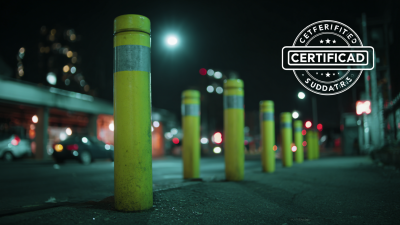
Navigating Import Export Certifications for Best Bollard Lights How to Ensure Compliance and Quality Standards
-
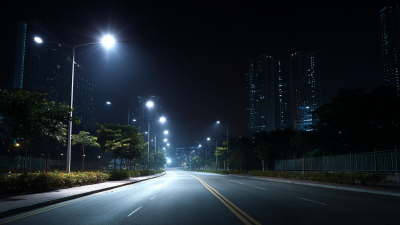
How to Enhance Urban Safety with Smart Street Light Solutions
-

Explore the Rising Demand for Parking Lot Lights at the Record Breaking 2025 Canton Fair
-

Elevating Global Standards with Best Solar Walkway Lights Made in China
-

Envisioning Tomorrow: The Revolution of Commercial Solar Lights
-
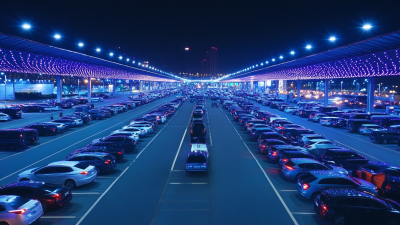
Exploring Innovations in Led Parking Lot Lights at the 137th Canton Fair in Guangzhou
